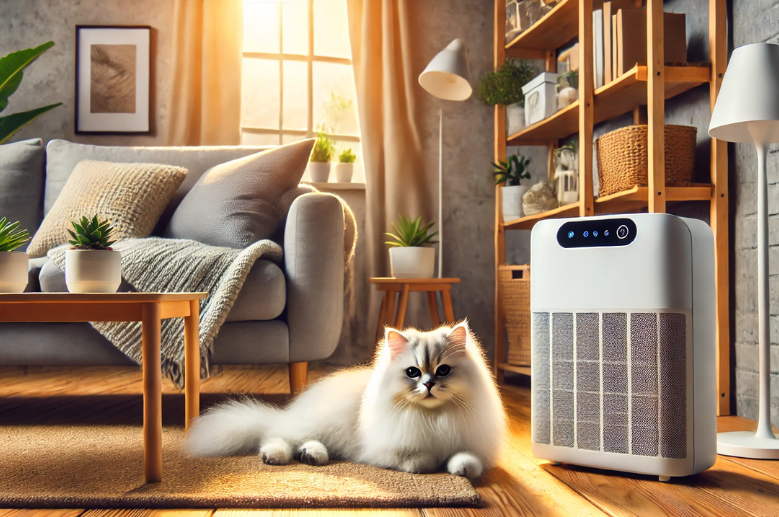Is your laundry room suffering from high humidity? Do you notice condensation on the windows, damp walls, or a musty smell? Since the primary function of a laundry room is to wash and dry clothes, it is naturally a 'hotspot' for excess moisture. If not controlled, this can create problems like mold, mildew, and structural damage in your home. How do you remove humidity in the laundry room?
In this article, we'll discuss what causes excessive humidity in laundry rooms and practical ways to reduce moisture levels. You may spend money on a dehumidifier or improve ventilation, but we'll cover the most efficient ways to keep your laundry room dry and comfortable.
Understanding the Causes of Humidity in Laundry Rooms
That would be the first important requirement- to understand why laundry rooms are always so wet. Most of us just do not realize that washing machines, dryers, and, in some cases, even an inadequate ventilation system create a stormy atmosphere for humidity buildup. Every time you wash a load in your washer, moisture is released into the air, especially when using a dryer with an improper vent or air circulation.
The main reason lies in the lack of ventilation in most laundry rooms. While functioning, a dryer emits heat and moisture. If this moisture has no exit, it will stay in the room. In the same way, air-dried clothes in a laundry room allow the water from the clothes to evaporate in the air, thereby raising the humidity level.
Too much moisture in your room destroys your washing room and stretches to affect your clothes, appliances, and even your health. High humidity encourages mold and mildew growth, which can easily damage surfaces and present a dangerous health threat for individuals with allergies or asthma.
Invest in a Dehumidifier
One of the best measures against humidity in a laundry room is having a dehumidifier. This draws in moist air, removes moisture from it, and then lets drier air back into the room. This will significantly reduce the humidity levels in your laundry room, making the space a much healthier and more comfortable one for yourself and everyone else within.
Once you decide on a dehumidifier for your laundry room, its capacity must be able to handle the size of the area. Compact units like the Abestorm Storm Guardian SN55S are efficient for small rooms and get rid of excess moisture without taking up too much space. More powerful units, such as the Abestorm Guardian Pro X, can handle greater moisture levels when the size is larger.
Running a dehumidifier will help prevent excess moisture from building up in your laundry room, preventing possible damage to walls, floors, or even appliances. Plus, it makes doing laundry more pleasant because it prevents all the stuffiness and dampness ofh high humidity.
Ventilation is the means that ensures low humidity, and therefore, it applies in every room, including the laundry. Without proper ventilation, the water contents in the air will remain for a long time in the many parts of your room and cause water to appear on the surface in the form of condensation, making mould growth possible and damaging the walls and floors of your house.

Improve Ventilation
Several measures can be taken to increase the ventilation of your laundry room. Your dryer should be vented straight out to the fresh air. If it has not already been done so, consider professional installation with an outside vent instead. This enables hot, moist air produced by the dryer to escape through the outside vent rather than being trapped inside the room.
Another is a vent fan. A vent fan draws damp air from a room and expels it outside. This is convenient if your laundry room doesn't have windows or another form of natural ventilation. Running the vent fan during the cycles and after helps circulate the air, keeping humidity low.
In laundry rooms with windows, simply opening a window while doing laundry will also help release moisture and freshen the air. This simple step can do much to keep humidity low, provided by other measures like using a dehumidifier.
Use Moisture-Resistant Materials
Moisture-resistant materials used in the building or design of the laundry room can also help fight moisture in your laundry room. Some of these are meant for high levels of moisture and can help avoid the problems caused by mold, mildew, and water damage.
An example of this technique is the use of moisture-resistant drywall or cement board instead of standard drywall, which reduces the chance of mold growth. Flooring materials that are more resistant to moisture levels include tiles and vinyl, which are better than carpets and hardwood due to their tendency to warp and become damaged by high humidity conditions.
Consider some moisture-resistant products if you are renovating a laundry room or building one. These will help avoid long-term problems due to high humidity and make the area somewhat manageable.
It can be required that the room has walls painted with mold-resistant paints to limit adverse effects caused by too much moisture in the room. Mold-resistant paint is made of some antimicrobial properties that stop the growth of mold and mildew, thereby keeping your walls clean and healthy.
Fix Leaks and Drips
Sometimes, when building up humidity in your laundry room is a concern, it could be more than just with the washing machine or clothes dryer, but also with leaks or drips. Leaks or drips from pipes, faucets, or washing machines might contribute significantly to this problem.
Regularly inspect your laundry room for signs of water damage or leaks. Check the walls, ceilings, and floors for puddles, damp spots, or discolouration. Leaks should be attended to immediately. Even a tiny, slow leak in the laundry room can reach saturation levels that produce high humidity and encourage mold formation over time.
In some cases, install a drip pan below your washing machine to catch spills and prevent the water from spreading to the floor. Any plumbing issue must be resolved by a professional so that you have long-term security against excess moisture.

Regular Cleaning and Maintenance
Attending to your laundry room and ensuring that it is clean and well-maintained will similarly help you eliminate moisture-related issues. For example, cleaning your dryer's lint trap every day will make your dryer run more efficiently and minimise the moisture and heat it produces.
It is equally important to check your dryer vent regularly for a blockage or buildup that might trap moisture and increase humidity levels in the room. A clogged dryer vent can also pose a fire hazard; therefore, it must remain free and in good operating condition.
After every washing cycle, the entire surface, including walls, windows, and appliances, should be cleaned to remove any remaining moisture. Mold and mildew often find it difficult to stay due to frequent cleaning.
Conclusion
Excessive humidity in your laundry room may also cause problems like mold, mildew, and even structural damage. Better ventilation, moisture-resistant materials, and some precautions against leaks and drips help the installation of a dehumidifier control the levels and provide a healthier and more comfortable environment.
Want to find some of the best dehumidifiers and air filtration equipment to reduce humidity in your laundry room? Then, simply log onto Abestorm's website. Here, you will find a wide range of moisture-controlling, high-performance products.









Shop For Dehumidifier